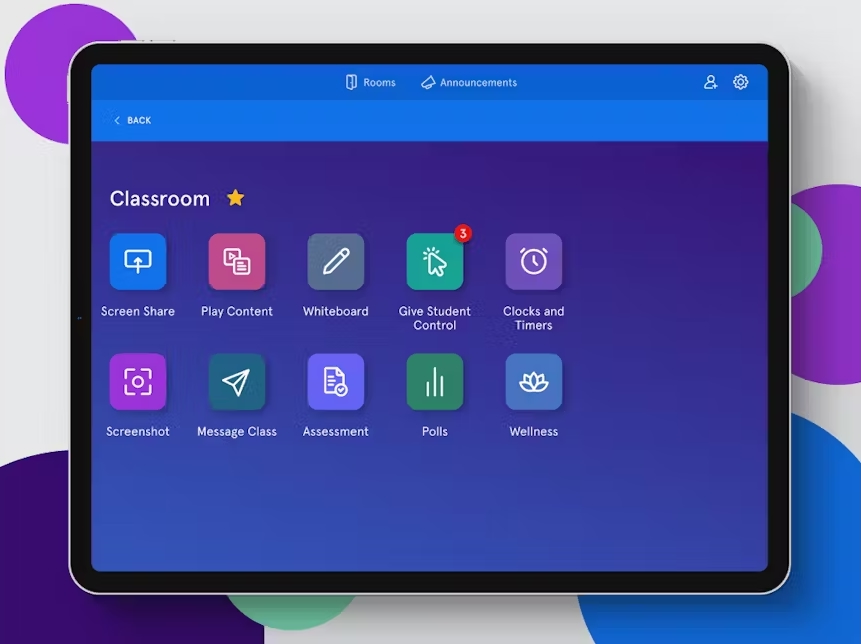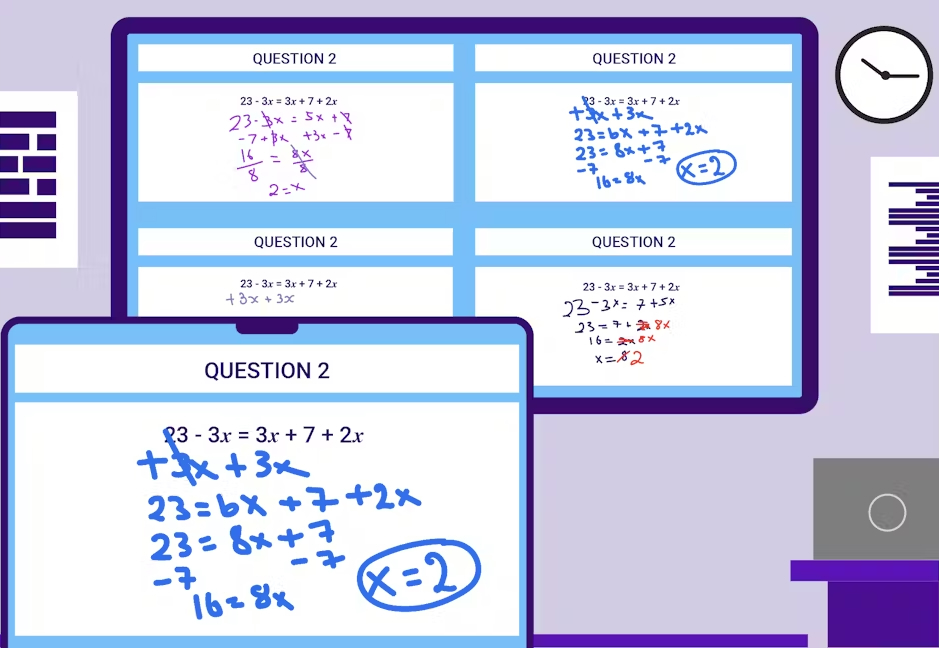
Is your classroom technology falling short of its promise of changing the classroom dynamic? It’s a question that often lingers in the background as district leaders navigate the vast array of options available. From projectors to interactive whiteboards, Chromebooks to iPads, the choices seem endless, and personal preferences can be tightly held. In a setting where budgets are tight, the pressure to make the right decision weighs heavily. For school district technology leaders, navigating a potential refresh of classroom technology can be daunting.
A technology refresh is not just about keeping up with the latest trends or adding the latest features. It’s about ensuring that edtech investments support educators, giving them the tools to meaningfully impact student learning outcomes. This requires a shift in perspective, moving away from traditional purchasing habits and toward a more strategic and inclusive approach that prioritizes the needs and goals of all stakeholders rather than preferences and familiarity.
#1 Bust your assumptions: Assess your current state
It’s natural to be drawn to the allure of interactive flat panels (IFPs) and their promise of touch interactivity, annotation capabilities and seamless digital integration. They can be considered the “holy grail” of tech-savvy classrooms! But it’s essential to thoroughly assess your current needs before making any assumptions.
Start by asking your key stakeholders — teachers, students, tech teams and administrators — specific questions to understand what will serve them best now and in the future. For example, what interactive features do they use? Which technology has not lived up to the hype? Which technology gets ignored because it isn’t reliable? And which gathers dust because it is too complicated? What functionality is missing that they would like to see?
One of the biggest shifts in the classroom over the last few years is the untethering of teachers from the front of the room. This newfound mobility allows teachers the freedom to interact with students on a more personal level by teaching alongside them while remaining in control of the classroom display through wireless screen sharing. That flashy new IFP may counteract this important transformation, instead pulling teachers and students back to the front of the classroom to use the panel’s features.
Tip: Conduct a needs assessment to understand how teacher and student needs have evolved since your last classroom technology refresh. Then, develop a shortlist of non-negotiables shared by all your stakeholders

The Vivi App keeps teachers in control of the classroom display wherever they are in the classroom.
#2 Think big: Envision your tech-enabled classroom
What are your district goals and priorities? Based on these priorities, what would your ideal learning environment look like? Prioritize the technologies that directly align with your organizational objectives.
For example, when Corbett School District was building a new middle school, the superintendent and technology director reflected on the student and teacher behaviors they wanted to encourage rather than focusing on specific classroom technology solutions from the start. They wanted to inspire more student-centered learning and student agency, a quality highlighted as an accelerator in the Consortium for School Networking (CoSN) 2024 Driving K-12 Innovation Report.
This perspective led to the design of a classroom centered around student engagement rather than solely focusing on a teacher stationed at the front of the room. They abandoned rows of desks and a single classroom display in favor of adaptable seating options, movable teacher podiums and TVs paired with Vivis on all four walls for maximum flexibility and versatility. The desired interactivity was provided by enabling better use of student devices through Vivi’s reliable wireless screen sharing and built-in instructional features rather than relying on the interactive features of a single expensive display panel.
Tip: Host a brainstorming session with your stakeholders. Imagine walking into your ideal classroom. What does it look like? How are your teachers and students behaving? Start from this vision and go from there.

Enabling students to take a screenshot of a math problem a teacher has displayed on the screen, annotate it on their device then share their work with the class invites discussion.
#3 Crowd source: Ask those who know
Which districts are upending the status quo and empowering their teachers through technology? What do their classroom tech stacks look like? Reach out and ask what their experiences have been. Ask them about the pros and cons of different options, and be open to exploring possibilities beyond your initial assumptions. Leverage online forums and attend conferences to kick off your research in the preliminary stages. When you are actively considering solutions, do not be shy about asking for reference districts before making a final decision.
Tip: In addition to members-only online communities like those hosted by CoSN and CITE, check out Reddit, which has an active K-12 Systems Administrators subreddit with over 40,000 members.
#4 Understand your total cost of ownership
While the base price is important, so is considering the bigger picture when evaluating the total cost of ownership for any technology. Consider these factors when calculating ownership costs:
- Extras: This includes accessories such as mounts, cables, and adapters.
- Support: Is ongoing technical support included in the purchase or subscription price? Is limited support included, with premium support available for an added fee?
- Training: Is training for all users included or just administrators? How is it provided (e.g., asynchronous or live, virtual or in-person)? Is it limited in quantity?
- Maintenance and repairs: If something breaks, will it be covered? If not, what are the estimated repair costs over the lifespan of the equipment? Is there a warranty?
- Direct and indirect labor: Indirect labor costs, such as time teachers spend on training or troubleshooting technology, can be estimated using teacher surveys. Direct labor includes both full-time employee (FTE) personnel costs and one-time labor costs, such as for installation.
However, do not just factor in costs; consider potential savings or hidden benefits. These could include solutions that address other issues or provide more value beyond their primary function. For example, districts buying Vivi for classroom screen sharing also gain campus communication features, including visual emergency alerts, digital signage and live video announcements. Turning every classroom display into a signage opportunity will reduce the time and expense of needing a separate digital signage vendor.
Tip: Use our Total Cost of Ownership Calculator to compare the cost of IFPs with the cost of another display type, such as a TV or projector paired with Vivi over time.
#5 Try before you buy
Before committing to a large-scale deployment, conduct a pilot program to evaluate how the technology works within your environment and your existing technology infrastructure. A well-run pilot also allows you to build support and momentum for a new technology solution, easing adoption post-purchase.
Here are a few tips to follow when setting up your pilot:
- Plan ahead: Build a complete test plan for everything you want to evaluate before you get started. This will help you go beyond testing the basic functionality.
- Choose the right timing: Pilot during a period when all stakeholders can dedicate the time and energy to explore the capabilities of the technology.
- Don’t go too big or too small: Size matters. You want to ensure you gather enough data from a variety of classrooms to inform your decisions. However, trying to do too much may not be worth the effort.
- Select the right participants: Include a mix of teachers with varying technology skills, teaching styles and experience.
By following these steps and considering your district’s unique needs, you can ensure your classroom technology refresh delivers to the most important stakeholders of all: teachers and students.
See for yourself how Vivi transforms communication, boosts classroom engagement, and simplifies IT management. Request a demo.
This piece originally appeared on EdSurge.com on April 3, 2024.



